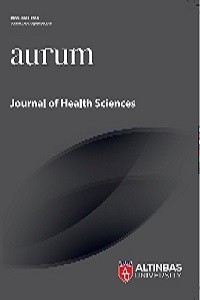Gender Mainstreaming in Health
Gender Mainstreaming in Health
Gender health, gender gap, gender mainstreaming,
___
- Akın, A. (2010). Combating gender discrimination in medicine. Female Medicine and Female Health Congress, Ankara.
- Danayiyen, A., Kıyak M. (2017) Gender mainstreaming: how can we make health policies sensitive to gender?. 1st International 11th Health and Hospital Administration Congress (Full Text Paper / Verbal Presentation) (Publication No: 4496003)
- Eser, G. (2017). Emotions, gender and stress. Beta Yayınları, Istanbul
- Etiler, N. (2012). Effects of neoliberal policies on healthcare professionals: feminization of health sector. 3. Female Medicine and Female Health Congress (Verbal presentation).
- İlkkaracan, İ. (2016). Analysis of Istanbul labor market from perspective of gender mainstreaming. “more and better work for women: Strengthening Women for Decent Work in Turkey” Project. OECD, 2018 indicators. https://data.oecd.org/healthres/doctors.html (accessed 10 May 2019)
- Orhan, B., Yücel, Ö. (2017). Gender-based perspective of delivery of healthcare services in Turkey. Marmara University Woman and Gender Investigations Journal, 1, 53-59. Doi: 10.26695/Mukatcad.2017.5
- Ministry of Health, Health Statistics Annual 2017 Bulletin, https://dosyamerkez.saglik.gov.tr/Eklenti/27344,saglikistatistikleri-yilligi-2017-haber-bultenipdf.pdf?0 (accessed 10 May 2019)
- Turkish Medical Association. (2019). Turkish Medical Association, Branch of Medicine and Female Health and Antalya Branch Office, “Workshop on Being a Female Medical Doctor”, Result Report.
- Urhan, B., Etiler, N. (2011). Gender-based analysis of female labor in health sector. Working and Society Journal, 29(2), 191-216.
- Ünver, S., Diri, E., Ercan, İ. (2010). Social perspective of male members in the profession of nursing. Türkiye Klinikleri J Med Ethics, 18(2), 96-120
- Wallis, C., Ravi, B., Coburn,N., Nam R., Detsky, A., Satkunasivam, R. (2017). Comparison of postoperative outcomes among patients treated by male and female surgeons: a population based matched cohort study. British Medical Journal, 359. Doi: https://doi.org/10.1136/bmj.j4366
- ISSN: 2651-2815
- Yayın Aralığı: Yılda 3 Sayı
- Başlangıç: 2018
- Yayıncı: Altınbaş Üniversitesi
Application of Tramadol Hydrogel as a Transdermal Drug Delivery with Sonophoresis Device to Rats
Sitem ŞAHİN, Gülengül DUMAN, Ece GENÇ, Alper YAMAN, Elif Çiğdem ALTUNOK
The Use of Therapeutic Ultrason in Control of Biofilm Infections
Investigation of Knowledge and Behaviour of Adult Individuals in Terms of Sustainable Nutrition
Using Theory to Nursing Research
Evaluation of the Content of National News Reflected on the Internet about Covid-19 Pandemic
Nazmiye EKİNCİ, Emin AKSAN, Merve ÖZZEYBEK TAŞ
The Importance of Antimicrobials in the Public Health
The Role of Cardiopulmonary Rehabilitation in Patients with Infected COVID-19
Digital Planning and Mucosa-supported Guided Implant Surgery: A Case Report
Precautions Taken in Radiotherapy Clinics in Covid-19 Pandemic
